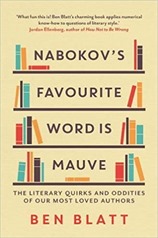 A very short book for this review, Writing and script – A very short introduction by Andrew Robinson – this fits in with my previous review on Kingdom of Characters by Jing Tsu. In some ways the “very short” format stymies my reviewing process which involves writing notes on a longer book!
A very short book for this review, Writing and script – A very short introduction by Andrew Robinson – this fits in with my previous review on Kingdom of Characters by Jing Tsu. In some ways the “very short” format stymies my reviewing process which involves writing notes on a longer book!
Robinson makes a distinction between proto-writing and fully writing, the first proto-writing – isolated symbols which clearly meant something – dates back to 20,000BC. Whilst the first full-writing defined as “a system of graphic symbols which can be used to convey any and all thought” dates back to some time around 3300BC in Mesopotamia and Egypt. It first appeared in India 2500 BC, Crete (Europe) 1750BC, China 1200BC and Meso-America 900BC. In common with humanity itself there is a lively single origin / multi-origin debate – did writing arise in one place and then travel around the world or arise separately in different places?
When I am reading books relating to history I am very keen to pin down “firsts” and “dates”, I suspect this is not a good obsession. As for mathematics the earliest full-writing was used for accountancy, and bureaucracy!
An innovation in writing is the rebus principle that allows that word can be written as a series of symbols representing sounds whilst those symbols by themselves might convey a different meaning.
I was excited to learn a new word: boustrophedon – which means writing which goes from left to right and then right to left on alternate lines – it is from the Greek for “like the ox turns”. Writing in early scripts was often in both left-right and right-left form and only stabilised to one form (typically left-right) after a period of time. I have been learning Arabic recently (which is read right-left) and was surprised how easy this switch was from my usual left-right reading in English.
Another revelation for me is that a written script is not necessarily a guide to pronunciation – in English it broadly is, some languages do a better job of describing pronunciation in the written form but other languages like Chinese, the core script is largely about transmitting ideas. Arabic holds an intermediate position – accents were added to an alphabet comprised of consonants to provide vowels and thus clarify pronunciation.
As well as the appearance of scripts, Robinson also discusses their disappearance, this happens mainly for political reasons. For example, Egyptian Hieroglyphics fell into decline through invasions by the Greeks and then Romans who used different scripts. Cuneiform was in use for 3000 years before dying out in around 75AD.
Deciphering scripts gets a chapter of its own, classifying decipherment efforts in terms of whether the script was known or unknown and whether the language it represented was known or unknown. Given a sample of a script the first task is to determine the writing direction, and the number of distinct elements. This second task can be challenging given the variations in individual writing styles and, for example, the use of capitalisation. The next step is to identify the type of script (an alphabet – standing for vowels and consonants, a syllabary – standing for whole syllables , or logograms – standing for whole words) – on the basis of the character count and other clues. The final step, of decipherment, requires something like the Rosetta stone – the same text written in multiple languages where at least one is known – names of people and places are often key here. A broad knowledge of languages living and dead is also a help.
The chapter on How writing systems work expands further on the alphabet/syllabary/logogram classification with a separate chapter on alphabets – I particularly liked the alphabet family tree. Greek is considered the first alphabet which included both consonants and vowels, earlier systems were syllabaries or just contained consonants.
Japanese and Chinese writing systems are covered in a separate chapter. I don’t think I had fully absorbed that Chinese characters were a writing system equivalent to the Latin alphabet, and so can express multiple languages. Kingdom of Characters focus on Chinese elided the fact that Japanese has troubles of its own, particularly in the number of homophones, Japanese speakers sometimes sketch disambiguating characters with their hands to clarify their meaning.
The book finishes with an obligatory Writing goes electronic chapter which highlights that text speak (i.e. m8 for mate) is an example of the rebus principle in action. Robinson also highlights that the electronic publishing has not ended or diminished the importance of the physically printed language, the opposite is true in fact.
This book packs a lot into a short space, it provides the reader with interesting new facts to share (I liked boustrophedon), it would not be a substantial holiday read but a great introduction to the field.

 Kingdom of Characters: A Tale of Language, Obsession, and Genius in Modern China
Kingdom of Characters: A Tale of Language, Obsession, and Genius in Modern China Nabakov’s Favourite word is Mauve by Ben Blatt
Nabakov’s Favourite word is Mauve by Ben Blatt